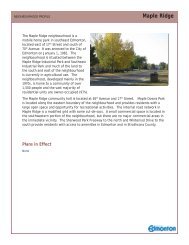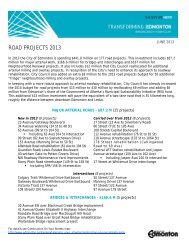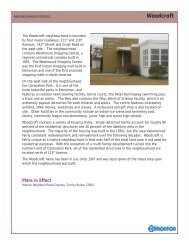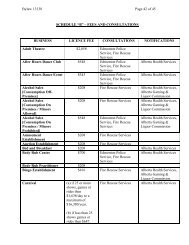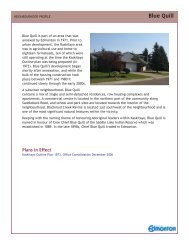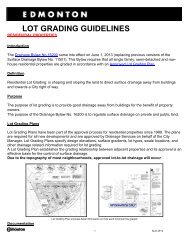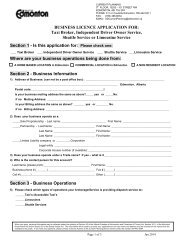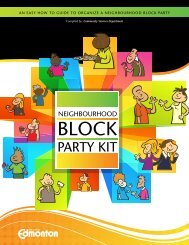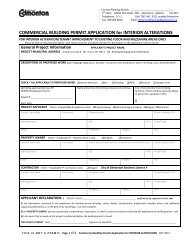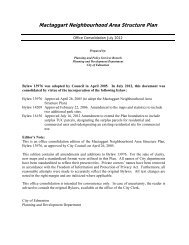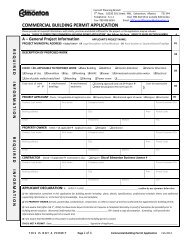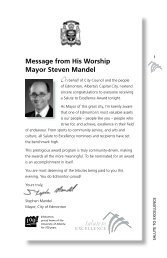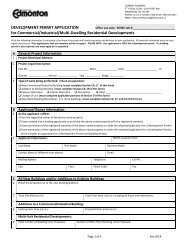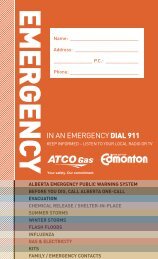Full Resource - City of Edmonton
Full Resource - City of Edmonton
Full Resource - City of Edmonton
Create successful ePaper yourself
Turn your PDF publications into a flip-book with our unique Google optimized e-Paper software.
The <strong>City</strong> Scene<br />
Use Technology<br />
Preview the following website sources,<br />
which are referenced in the teaching<br />
and learning process notes.<br />
Google Earth can be downloaded at<br />
http://earth.google.com.<br />
Google Maps can be accessed at<br />
http://maps.google.com.<br />
Community Walk is an online tool,<br />
found at www.communitywalk.com,<br />
where personal and community maps<br />
and routes can be created. Note that<br />
this website includes some advertising.<br />
The <strong>City</strong> <strong>of</strong> <strong>Edmonton</strong> Archives<br />
provide photographs and contextual<br />
information in a fully searchable online<br />
catalogue at http://archivesphotos.<br />
edmonton.ca.<br />
• Quad T-Chart (p. 184)<br />
• Triple T-Chart (p. 187)<br />
• Mind Map (p. 181)<br />
• Venn Diagram (p. 188)<br />
2. Plan a route through the neighbourhood around your school for<br />
students to walk as part <strong>of</strong> an urban neighbourhood walk activity.<br />
Students will be asked to identify public and private places, facilities,<br />
infrastructure and features <strong>of</strong> the natural environment.<br />
Organize students into small groups for the walk and obtain any<br />
necessary permission forms and parent volunteers.<br />
Alternatively, use online resources such as Community Walk, Google<br />
Maps and Google Earth to plan a virtual route.<br />
3. Compile resources that can help students explore their urban<br />
environment:<br />
• Copies <strong>of</strong> old and new maps<br />
• Photographs, brochures, pictures, books<br />
• Local newspapers or newsletters<br />
4. Prepare for assessment:<br />
• Check In #1 (p. 46)<br />
• Assess Your Understandings (p. 47)<br />
5. Allocate class periods:<br />
• Comparison chart (1 class)<br />
• Roundtable discussions (1-2 classes)<br />
• Urban neighbourhood walk (2 classes)<br />
• Spheres <strong>of</strong> influence organizer (1-2 classes)<br />
• Change chart (1 class)<br />
• Survey & action poster (1-2 classes)<br />
6. Use the teacher background information that follows to support<br />
students’ learning <strong>of</strong> the conceptual focus <strong>of</strong> activities in set the<br />
context: The <strong>City</strong> Scene.<br />
22<br />
Make A Better <strong>City</strong>



